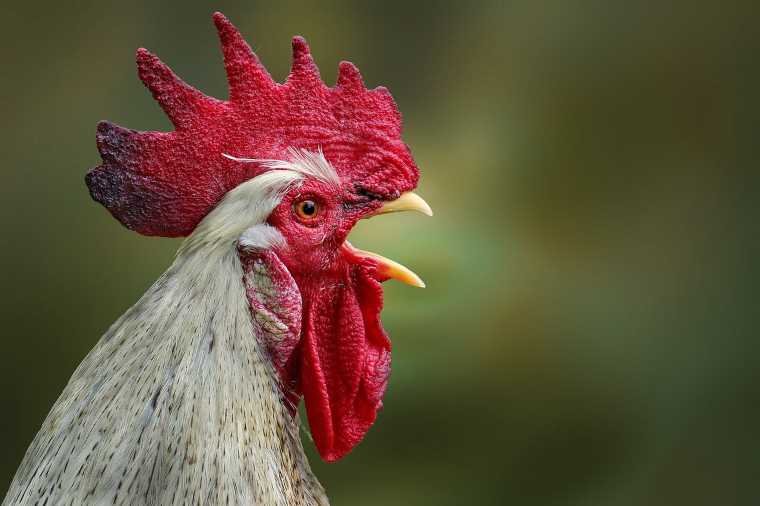Like a real-world Dr. Doolittle, researchers from Dalhousie University say they are using cutting-edge technology to decode the complexities of chicken communication.
The potentially breakthrough method, which employs AI to detect patterns in massive amounts of data, appears poised to offer previously unavailable insights into the everyday lives and challenges of these flightless fowl and may even lead to methods to communicate with a wide range of non-human animals.
“Chickens are quite the communicators — their clucks, squawks, and purrs are not just random sounds but a complex language system,” the Dalhousie University researchers behind the novel endeavor explain in a written post. “These sounds are their way of interacting with the world and expressing joy, fear, and social cues to one another.”
Using AI to Create a Star Trek-Style Universal Chicken Translator
In that same post, the researchers point out that, like humans, chicken languages vary based on their age, environment, and even domestication. They also use visual cues like facial expressions and body language to communicate. As a result, this wide variety of methods and variations has made the idea of successfully translating chicken communication seem like science fiction.
Fortunately, the Dalhousie team says that the advent of powerful AI algorithms has opened the door to decoding the language of chickens, potentially revealing the complexities of their social structure as well as offering insights into their individual personalities and behaviors.
“The use of AI and machine learning in this endeavor is like having a universal translator for chicken speech,” the researchers explain, comparing their system to the fictitious device used in Star Trek lore to communicate with a whole host of non-human species.
That’s because AI can analyze more data in seconds than a human can analyze in a lifetime. Still, the researchers note that even this unprecedented computing power has its limits.
“This isn’t a simple task,” they explain. “Chickens have a range of sounds that vary in pitch, tone, and context.”
Fortunately, the researchers say that their advanced data analysis techniques are constantly improving and that, slowly but surely, the team is “beginning to crack their code.”
Among the most potent tools in the research team’s arsenal is something called Natural Language Processing (NLP). A tool typically used to decipher complex forms of human communication, NLP software has evolved to the point that the team says they are starting to decode the emotional states of chickens.
“Are they stressed?” they ask. “Are they content? By understanding their emotional state, we can make more informed decisions about their care and environment.”
Another method the team has employed involves the analysis of facial cues. This includes using cameras to measure eye blinks and infrared sensors to detect facial temperature variations. Although still new territory that moves beyond the analysis of chicken vocalizations, the researchers believe understanding these physical cues can also offer even further insights into the animal’s state of mind.
“By using non-invasive methods like video and thermal imaging, we’ve observed changes in temperature around the eye and head regions, as well as variations in blinking behaviour, which appear to be responses to stress,” they write. “These preliminary findings are opening new avenues in understanding how chickens express their feelings, both behaviourally and physiologically, providing us with additional tools to assess their well-being.”
Long Term Goals Include Improvements in Farming, Conservation and Animal Welfare
Throughout their post, the researchers make sure to caution that their work has yet to undergo peer review. Instead, they have made their analysis of chicken communications available in a pre-print review, with hopes that their work can be applied to improve the conditions of the millions of chickens raised exclusively as food stock.
“Farmers can use this knowledge to create better living conditions, leading to healthier and happier chickens,” they write. “This, in turn, can impact the quality of produce, animal health, and overall farm efficiency.”
The researchers also note that their work can go beyond the idea of improving the quality of produce and the overall efficiency of a farm. This includes the possibility of deciphering a wide range of avian languages to reveal that “knowledge can be vital for conservationists working to protect bird species and their habitats.”
Ultimately, the researchers say that deciphering chicken communications can lead to breakthroughs with other animals as well, potentially shifting the way humans treat these incredibly complex creatures who share our planet.
“As we continue to make strides in this field, we are opening doors to a new era in animal-human interaction,” they conclude. “Our journey into decoding chicken language is more than just an academic pursuit: it’s a step towards a more empathetic and responsible world.”
Christopher Plain is a Science Fiction and Fantasy novelist and Head Science Writer at The Debrief. Follow and connect with him on X, learn about his books at plainfiction.com, or email him directly at christopher@thedebrief.org.

